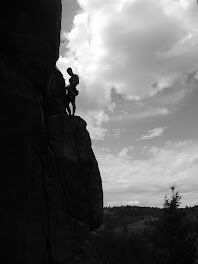I have been reading and thinking a lot about creativity. I read Hugh MacLeod’s book
Ignore Everybody and 39 other Keys to Creativity. In summary, he is telling the reader to listen to their own voice, work hard, hone your craft and have your priorities in order, (don’t quit your day job). Hugh MacLeod blogs at
Gapingvoid.com
I was checking out comments on the book in
Good Reads and some of the reviewers hated it and others loved it and the simplistic witty observations presented by Hugh MacLeod. As was noted if you were expecting a witty book that will spark you creativity this is not the book to read, instead his focus seems to be on how to work hard to achieve success based upon you creativity. It is a business book for those wo want to succeed by putting their creative talent to work for them. Work hard, stay positivity, focused ..umm work hard. That is common advice..that is why you should ignore everybody..those well meaning friends and colleagues who will give you constructive criticism and feedback ..they really are not qualified to do that ..they don’t know your art.
I took from this book that you have to figure out what your “creative crayons” are and push your creativity beyond what is normal and acceptable and define what makes you unique and stand out. My creative crayons are the photographs that I write about here, Photoshop, and what I write. This is my life, taking flat objects or images; photographs, and making them multidimensional via my crayon toolbox, writing and digital images an design via Photoshop.
On this project I have read a great deal about others who have conducted similar research. However, for the most part, I have found that their projects are closely defined, I feel what I am doing is loose with the project unfolding ahead of me as I work through my collection. One part of Hugh MacLeod’s book that I definitely will take away is the following…”The idea doesn’t have to be big. It just has to be yours.”
I have also been reading
Susan Sontag’s On Photography. Susan Sontag’s book was somewhat maddening for me; I am a collector and studying these photographs for meaning. Yet it seemed to me she disparaged both at times. However there were some great observations that I will share from this book:
Sontag often referred to the concept that some cultures avoid having photos taken because they felt that photos steal a little of their souls. With that she also observed that to photograph is to appropriate the thing photographed ..it means putting oneself into a certain relation to the world that feels like knowledge.
My favorite line, “..having an aptitude for discovering beauty in what everybody sees but seeing neglects as too arduous.”
Photographed images do not seem to be statements about the world so much as pieces of it, miniature of reality that anyone can make or acquire.”
Regarding collecting photographs she said: To collect photographs is to collect the world. Movies and television programs light up walls, flicker and go out but with still photographs the image is also an object, lightweight, cheap to produce, easy to carry about…
Sontag also stated that photographs really are experiences captured….photographs have multiple meanings, indeed to see something in the form of a photograph is to encounter a statement or object of fascination.
Here are some photographs I have collected:
These 8 are what I call a “family” these photos were taken in the same place at Christmas time:
What do I see in this picture? Well I think the girl in this picture received a very pretty pink robe for Christmas. I cannot help but note the wall paper on the wall, the lamp and the throw on the couch! Remember those? That couch will look new ..you will never see it but it will forever look new.

The patriarch?


You have to appreciate this photo. This woman reminds me so much of my grandmother and other women of her time.




Now it probably had to be something special to get these four in suits. Wedding or funeral?

Traveling to other countries. Capture what surprises ..capturing a moment.


What do I like here? The dress, the purse and the hair. An obvious travel photo ..

I am sure it was surprising and interesting to capture this young man on a little donkey.

And you really have to appreciate this picture. I like it! Camels waiting for the tourist to come along for a desert ride.
























